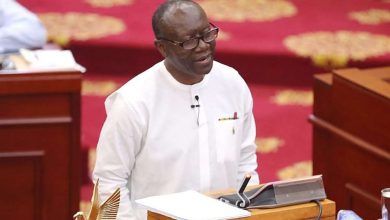
The National Chairman of the opposition National Democratic Congress (NDC), Johnson Asiedu Nketiah says President Nana Akufo-Addo has woefully failed in his fight against corruption.
Delivering an address titled, “The True State of the Nation Address” on Monday at the University of Professional Studies, Accra, Mr Asiedu Nketiah stated that the president’s actions and complicity have emboldened many of his officials, not just the Vice President, Alhaji Bawumia whose name has come up in multiple corruption scandals
“President Akufo-Addo’s silence on corruption in his infamous address was loud. It was as loud as his guilt. Evidently, corruption has defeated his family and friends’ government. Instead of confronting this canker head-on, President Akufo-Addo has constituted himself into a “Corruption Clearing Agent”, ever-willing to whitewash himself and any of his appointees who dabble in corruption, even before investigative processes commence.
“The President’s actions and complicity have emboldened many of his officials, not least the Vice President, Alhaji Bawumia whose name has come up in multiple corruption scandals such as the PDS scandal, the shady Gold-for-Oil deal, the Stolen Rice scandal and the appearance fee scandal”.
Mr Asiedu Nketiah also accused the President of desecrating Ghana’s national honours by conferring the honours on corrupt individuals in his government.
He said the awards scheme was established by Ghana’s first President, Osagyefo Dr Kwame Nkrumah to honour distinguished Ghanaian nationals and institutions for their contributions to the development of the country.
For him, it was therefore untenable for the President to confer such honours on corrupt individuals whose cases are before Parliament for investigations.
He explained that awarding appointees whose corrupt acts are under investigation with national honours is tantamount to rewarding criminality, saying “Kwame Nkrumah did not establish the awards to reward criminality.”
Source-Citinewsroom





